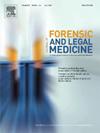一种基于死后图像的自动损伤分类机器学习方法
IF 1.2
4区 医学
Q3 MEDICINE, LEGAL
引用次数: 0
摘要
人工智能(AI)在法医科学中的应用为自动检测死后分析中的损伤提供了新的机会。本研究主要关注两种重要类型的损伤-瘀伤和擦伤的语义分割。收集了死后损伤图像数据集,随后开发了适当的数据预处理和注释技术,以训练和评估人工智能模型。采用高效netb3和ResNet50作为骨干网,实现了u - net、FPN和linne三种深度学习架构。采用优化策略,通过结合自定义损失函数以及图像变换和类平衡技术的组合来提高检测性能。实验结果表明,该模型具有较高的灵敏度(92.7%)和特异性(98.9%)。这些发现突出了人工智能驱动方法在损伤检测中对死后图像进行自动化和客观分析的潜力,为进一步研究奠定了基础。本文章由计算机程序翻译,如有差异,请以英文原文为准。
A machine learning approach for automated injuries classification on postmortem images
The application of Artificial Intelligence (AI) in forensic science offers new opportunities for the automated detection of injuries in postmortem analysis. This study focuses on the semantic segmentation of two significant types of injuries—bruises and abrasions. A dataset of postmortem injury images was collected, followed by the development of appropriate data preprocessing and annotation techniques to train and evaluate AI models. Three deep learning architectures—U-Net, FPN, and LinkNe—were implemented, using EfficientNetB3 and ResNet50 as backbone networks. An optimisation strategy was employed to enhance detection performance by incorporating a custom loss function alongside a combination of image transformation and class balancing techniques. Experimental results demonstrated high sensitivity (92.7 %) and specificity (98.9 %) for the best-performing model. These findings highlight the potential of AI-driven methods for automated and objective analysis of postmortem images in injury detection, laying the foundation for further research.
求助全文
通过发布文献求助,成功后即可免费获取论文全文。
去求助
来源期刊

Journal of forensic and legal medicine
MEDICINE, LEGAL-
CiteScore
2.70
自引率
6.70%
发文量
106
审稿时长
57 days
期刊介绍:
The Journal of Forensic and Legal Medicine publishes topical articles on aspects of forensic and legal medicine. Specifically the Journal supports research that explores the medical principles of care and forensic assessment of individuals, whether adult or child, in contact with the judicial system. It is a fully peer-review hybrid journal with a broad international perspective.
The Journal accepts submissions of original research, review articles, and pertinent case studies, editorials, and commentaries in relevant areas of Forensic and Legal Medicine, Context of Practice, and Education and Training.
The Journal adheres to strict publication ethical guidelines, and actively supports a culture of inclusive and representative publication.
 求助内容:
求助内容: 应助结果提醒方式:
应助结果提醒方式:


